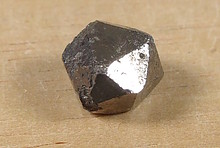Home PageAbout MindatThe Mindat ManualHistory of MindatCopyright StatusWho We AreContact UsAdvertise on Mindat
Donate to MindatCorporate SponsorshipSponsor a PageSponsored PagesMindat AdvertisersAdvertise on Mindat
Learning CenterWhat is a mineral?The most common minerals on earthInformation for EducatorsMindat ArticlesThe ElementsThe Rock H. Currier Digital LibraryGeologic Time
Minerals by PropertiesMinerals by ChemistryAdvanced Locality SearchRandom MineralRandom LocalitySearch by minIDLocalities Near MeSearch ArticlesSearch GlossaryMore Search Options
The Mindat ManualAdd a New PhotoRate PhotosLocality Edit ReportCoordinate Completion ReportAdd Glossary Item
Mining CompaniesStatisticsUsersMineral MuseumsClubs & OrganizationsMineral Shows & EventsThe Mindat DirectoryDevice SettingsThe Mineral Quiz
Photo SearchPhoto GalleriesSearch by ColorNew Photos TodayNew Photos YesterdayMembers' Photo GalleriesPast Photo of the Day GalleryPhotography
╳Discussions
💬 Home🔎 Search📅 LatestGroups
EducationOpen discussion area.Fakes & FraudsOpen discussion area.Field CollectingOpen discussion area.FossilsOpen discussion area.Gems and GemologyOpen discussion area.GeneralOpen discussion area.How to ContributeOpen discussion area.Identity HelpOpen discussion area.Improving Mindat.orgOpen discussion area.LocalitiesOpen discussion area.Lost and Stolen SpecimensOpen discussion area.MarketplaceOpen discussion area.MeteoritesOpen discussion area.Mindat ProductsOpen discussion area.Mineral ExchangesOpen discussion area.Mineral PhotographyOpen discussion area.Mineral ShowsOpen discussion area.Mineralogical ClassificationOpen discussion area.Mineralogy CourseOpen discussion area.MineralsOpen discussion area.Minerals and MuseumsOpen discussion area.PhotosOpen discussion area.Techniques for CollectorsOpen discussion area.The Rock H. Currier Digital LibraryOpen discussion area.UV MineralsOpen discussion area.Recent Images in Discussions
Fakes & FraudsFaked Sulfur Specimen?

5th Aug 2017 12:50 UTCJeffrey Shallit
The specimen much more closely resembles pieces recently offered for sale on e-rocks with the location "Kawah-Ijen Volcano, Java, Indonesia" (see, e.g., https://e-rocks.com/item/mgr602213/sulphur ).
However pictures of the Java locality online show sellers with many items evidently cast from molds (see, e.g., http://www.topindonesiaholidays.com/blog/?p=754 ).
So I am wondering
(i) is the given Italian location believable? I am guessing no.
(ii) is the specimen really from Java? I am guessing yes.
(iii) is the specimen really natural, or is it formed by humans pouring and twisting molten sulfur? I am guessing the latter.

5th Aug 2017 13:15 UTCHolger Hartmaier 🌟
Here in Alberta, sulphur is extracted by the ton from sour gas (natural gas containing hydrogen sulphide and stored in immense stockpiles (see attached photo). It is used by various industries (i.e. fertilizer/chemical) in both solid and liquid form. I can't say if your specimen is a fake or not, but just wanted to make you aware that there is a lot of artificial sulphur available from industrial sources.
I'm sure there are Mindat members who might provide better opinions on the validity of the label.
https://encrypted-tbn0.gstatic.com/images?q=tbn:ANd9GcSjSYRKxq-yekRWFUfTGQTCEY6V7vWm1YtGJ5r7CvudGMuuNpNLhQ
Cheers,
Holger

5th Aug 2017 14:40 UTCBob Harman
You probably know that several years ago, on this Mindat website, there was a thread on another type of cleverly faked very hi end sulfur crystal specimens. Those examples, I think they also were from Italy, were eventually proved to be fakes as their sulfur isotope was not the same as the naturally occurring isotope from that locality. If it would be worthwhile and provable, maybe sulfur isotope studies could be used on these examples. CHEERS......BOB

6th Aug 2017 03:55 UTCDoug Daniels

6th Aug 2017 04:56 UTCAlfredo Petrov Manager
6th Aug 2017 12:01 UTCReiner Mielke Expert
6th Aug 2017 13:50 UTCDavid Von Bargen Manager
7th Aug 2017 15:04 UTCLuca Baralis Expert

7th Aug 2017 17:49 UTCHolger Klapproth
the sulfur specimen you have here is certainly not a natural specimen from the Liparic islands. I have been there several times on field trips and the sulfur there is condensed from fumaroles. It has a totally different look. This material looks like having been made from molten sulfur (maybe by casting it in water). This stuff is sold on the islands but it certainly does not build like this in nature. I used to get sulfur from our local petrol refinery when I was a kid. They produce a lot when they remove sulfur from the crude oil. And it is very very cheap. There is such a facility in the next town (Milazzo) from the Liparic Islands. And I guess some people found a nice way in turning this in a business and extract some money from the tourists. Btw the same crap is sold on Vesuvius.
Best regards
Holger




Mindat.org is an outreach project of the Hudson Institute of Mineralogy, a 501(c)(3) not-for-profit organization.
Copyright © mindat.org and the Hudson Institute of Mineralogy 1993-2024, except where stated. Most political location boundaries are © OpenStreetMap contributors. Mindat.org relies on the contributions of thousands of members and supporters. Founded in 2000 by Jolyon Ralph.
Privacy Policy - Terms & Conditions - Contact Us / DMCA issues - Report a bug/vulnerability Current server date and time: April 26, 2024 23:11:36
Copyright © mindat.org and the Hudson Institute of Mineralogy 1993-2024, except where stated. Most political location boundaries are © OpenStreetMap contributors. Mindat.org relies on the contributions of thousands of members and supporters. Founded in 2000 by Jolyon Ralph.
Privacy Policy - Terms & Conditions - Contact Us / DMCA issues - Report a bug/vulnerability Current server date and time: April 26, 2024 23:11:36












